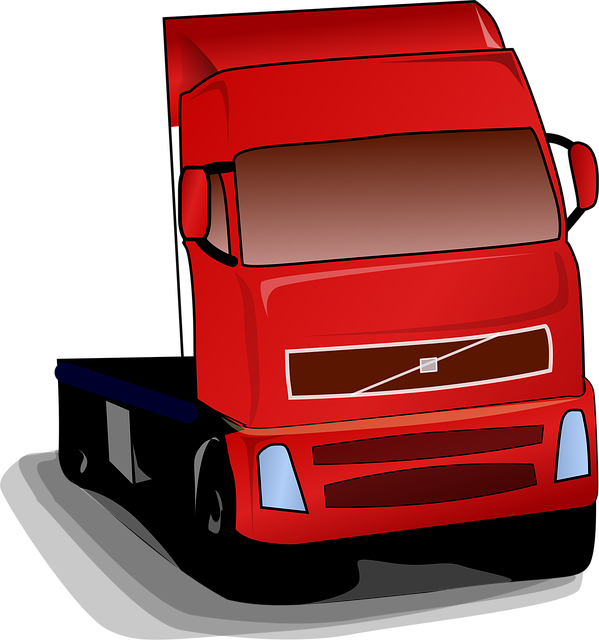Looking to register your car in California? This comprehensive guide breaks down the process step-by-step. First, understand the state’s unique car registration requirements for both new and used vehicles. Next, gather essential documents for a seamless VIN verification process. Learn how to perform this critical check using your Vehicle Identification Number (VIN). Choose the right registration class based on vehicle type and use. Finally, submit your application and fees online or in-person. Master these steps and you’ll be cruising California roads legally and stress-free!
- Understand California Car Registration Requirements
- Gather Necessary Documents for VIN Verification
- Perform Vehicle Identification Number (VIN) Check
- Choose an Appropriate Registration Class
- Submit Application and Pay Fees Online or in Person
Understand California Car Registration Requirements

Before registering your car in California, it’s crucial to understand the state’s specific requirements for vehicle registration. One key aspect is ensuring that your car’s Vehicle Identification Number (VIN) is verified and accurate. This process, known as VIN verification, plays a vital role in confirming the vehicle’s authenticity and history. In California, all vehicles must undergo this inspection before they can be registered, ensuring compliance with state regulations.
A mobile VIN verifier or inspector can facilitate this process by providing on-site services to verify your car’s VIN. This is particularly beneficial for those who prefer convenience, as it allows for a swift and efficient way to meet the registration criteria without having to visit a specialized facility. With a valid and accurate VIN, you’ll be one step closer to completing the registration process smoothly in California.
Gather Necessary Documents for VIN Verification

Before registering your car in California, you’ll need to gather essential documents for VIN verification, a crucial step in ensuring vehicle authenticity and compliance with state regulations. The California Department of Motor Vehicles (DMV) requires the Vehicle Identification Number (VIN) to be verified as part of the registration process. This involves confirming the VIN’s accuracy and matching it with the vehicle’s make, model, and year.
To facilitate this, have your vehicle’s title, a valid driver’s license or state ID card, and proof of insurance ready. Additionally, consider using a mobile vin verifier or conducting a mobile vin inspection to streamline the process. These services allow you to obtain a digital report instantly, making it easier to prove your car’s identity and avoid potential delays during registration at the DMV.
Perform Vehicle Identification Number (VIN) Check

Before registering your car in California, it’s crucial to perform a Vehicle Identification Number (VIN) check. This process involves verifying the authenticity of your vehicle’s VIN, which is a unique code that identifies specific features and history of the car. A VIN verification ensures that the vehicle matches the details provided by the manufacturer and helps prevent fraud. In California, you can conduct this check through various methods, including online platforms or by visiting a designated DMV office.
Consider opting for a mobile VIN verification or vin inspection service to make this process even more convenient. These services send a specialist to your location, whether it’s your home or workplace, to perform a thorough examination of the vehicle’s VIN. This is particularly beneficial if you’ve recently purchased a used car, as it provides added peace of mind and helps ensure that no discrepancies exist between the reported and actual vehicle information.
Choose an Appropriate Registration Class

When registering your car in California, understanding your vehicle’s classification is crucial. The state offers various registration classes tailored to different types of cars. This process, often involving a VIN (Vehicle Identification Number) verification, ensures that each vehicle meets specific standards and pays the corresponding fees.
For instance, passenger cars typically fall under Class A or B, with Class A covering standard vehicles up to a certain weight limit. Commercial vehicles, such as trucks or SUVs, are usually classified as Class C. A simple VIN inspection can help determine which class applies to your car. You can opt for a mobile VIN verification service to have this done conveniently at your location, making the registration process even easier.
Submit Application and Pay Fees Online or in Person

To register your car in California, you’ll need to complete an Application for Title and Registration (Form DV306). You can submit this application online through the California Department of Motor Vehicles (DMV) website or in person at a local DMV field office. Along with your application, you’ll be required to pay the necessary fees. These include the registration fee, vehicle license fee, and emissions testing fee if applicable.
One convenient option is to utilize a mobile vin inspection service, where a professional will come to you to perform the vin verification process. This is particularly useful for those who may have difficulty visiting a DMV office. Alternatively, some services offer online submission with a mobile vin verifier, allowing you to initiate the registration process from the comfort of your home or even while on the go.
Registering a car in California involves understanding key requirements, gathering essential documents for VIN verification, performing a vehicle identification number (VIN) check, selecting the right registration class, and submitting an application along with relevant fees. By adhering to these steps and ensuring proper VIN verification, you can successfully navigate the process and hit the road legally in The Golden State.
